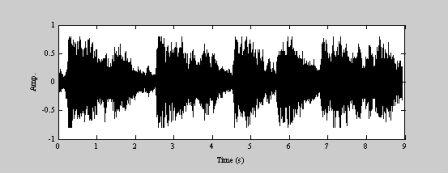 FOCUS: MUSIC
FOCUS: MUSIC

Music is defined differently than sound.
(Whether sound is music or noise is a little more subjective, of course)
MUSIC is defined as an extension of sound. According to John Broadhouse, author of the book Musical Acoustics:
- noise is emitted in regular, rapid, distinct
variations of the same sound.
- "on the other hand, a musical tone strikes the ear as a perfectly undisturbed, uniformed sound which remains unaltered as long as it exists."
With our understanding of sound, these ideas makes sense. Since sound is composed of moving air
particles moving in different ways, it seems natural that a musical tone would be constant and contrived.
For example, if you hear two different babies cry, it is clear that they do not sound exactly alike. However, you can still tell, in both cases, that they are babies crying, even if you cannot see either one. This follows from the fact that they are distinct variations of the same sound. We can also use this idea to distinguish the same musical tones coming from different musical instruments.
|
As awesome as that
looks, we can break it down to better understand what's really going on.
Take a single note, denoted by a single sine wave as shown below. While this is an actual perfect sine wave, most musical instruments cannot produce a wave that looks exactly like this. These can be produced, however, by an electronic function generator, which creates sort of polyphonic tones. Below, we can examine actual instrument sound waves. |
 |
| This image courtesy of Geo-Fex Cybernet Music |
 |
Flute, playing an A |
 |
Violin, playing a G |
 |
Human voice, soprano |
The irregularities in these waves are caused by the fact that musical instruments cannot actually reproduce exact tones. They can sort of oscillate around the note, but they do not produce a single, unwavering note. If you listen closely to a live instrument, you can sometimes hear this phenomenon. This results from the construction of the instrument, however, not from the physics. Furthermore, the functions that are created by musical instruments can be written as combinations of different sine and cosine functions. This means they are still periodic functions and behave just like all other sound waves, with simply a few translations.
This can be further explored here: http://www.mindspring.com/~scottr/zmusic/
which has a very helpful activity.
